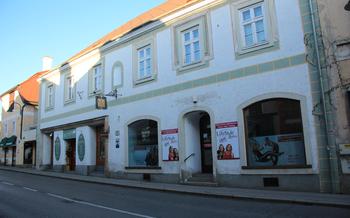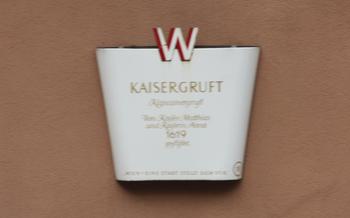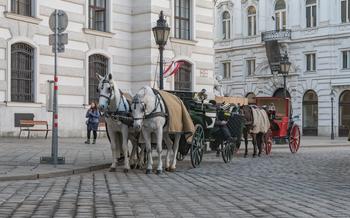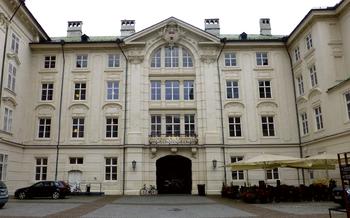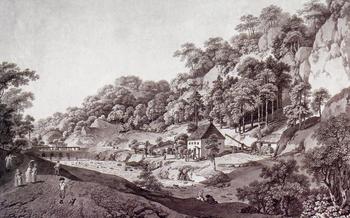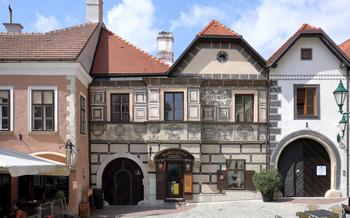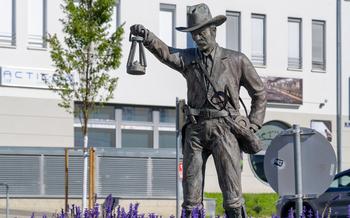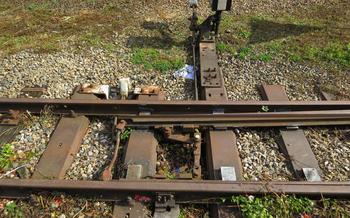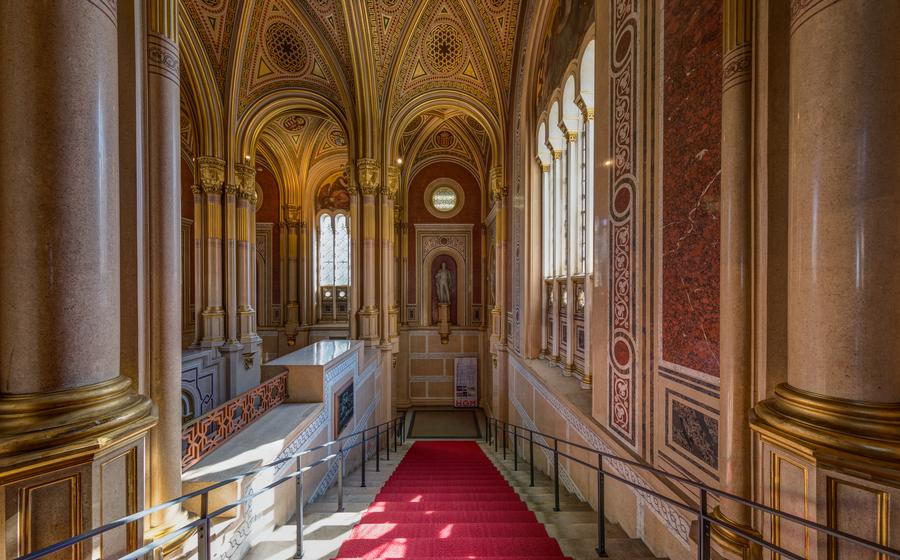
Heeresgeschichtliches Museum (Military History Museum)
- A Journey Through Time at the Heeresgeschichtliches Museum:
- From Ancient to Modern: Exploring the Permanent Exhibitions
- Unveiling the Habsburg Monarchy's Military Heritage
- Witnessing Technological Advancements in Warfare
- Uniforms and Fashion Through the Ages
- Stories of Valor and Sacrifice: The Hall of Heroes
- Interactive Exhibits for Hands-On Learning
- Educational Programs and Workshops for All Ages
- Capturing Memories: Photography and Videography Guidelines
- Souvenirs and Mementos: Preserving the Experience
- Accessibility for Visitors with Disabilities
- Sustainability and Environmental Initiatives
- Insider Tip: Hidden Gems and Secret Spots
A Journey Through Time at the Heeresgeschichtliches Museum:
Nestled in the heart of Vienna, the Heeresgeschichtliches Museum (Military History Museum) stands as a testament to Austria's rich military heritage and the evolution of warfare throughout the ages. Founded in 1856, the museum houses an extensive collection of artifacts, weapons, uniforms, and vehicles, providing visitors with a comprehensive journey through the history of armed conflict. Its grand neo-Renaissance building, designed by Ludwig Förster and Theophil Hansen, is a masterpiece in its own right, adding to the overall allure of this magnificent institution.
The museum's diverse collection encompasses a vast array of exhibits, from ancient weaponry to modern armaments, offering a glimpse into the technological advancements that have shaped the course of warfare. Thematic galleries delve into specific aspects of military history, such as the Habsburg Monarchy's military legacy, the World Wars, and the evolution of weaponry, providing visitors with a deeper understanding of the complexities of military conflicts.
From Ancient to Modern: Exploring the Permanent Exhibitions
The Heeresgeschichtliches Museum's permanent exhibitions offer a comprehensive journey through the history of warfare, from its earliest origins to the present day. The museum's vast collection includes artifacts from prehistoric and ancient civilizations, showcasing the evolution of weaponry and military strategies in the earliest stages of human history. Visitors can explore the military history of the Middle Ages and early modern era, learning about notable battles, influential military leaders, and the development of new technologies that transformed warfare.
A significant highlight of the museum is its extensive collection dedicated to the World Wars and subsequent conflicts. This section features a wide range of artifacts, uniforms, and weaponry from both world wars, providing a poignant reminder of the immense human cost and technological advancements that shaped these conflicts. Interactive displays and multimedia presentations bring history to life, allowing visitors to experience the impact of war on a personal level.
Unveiling the Habsburg Monarchy's Military Heritage
The Heeresgeschichtliches Museum houses a captivating collection that unveils the rich military heritage of the Habsburg dynasty, which ruled over Austria for over 600 years. The Habsburgs maintained a formidable military force that played a pivotal role in shaping the course of European history.
Imperial Legacy: The museum showcases the Habsburg's imperial legacy through uniforms, insignia, and personal belongings of notable military figures, such as Emperor Franz Joseph I, the last emperor of Austria. These artifacts provide insights into the grandeur and opulence of the Habsburg court and the importance placed on military prowess.
Uniforms and Insignia: The elaborate uniforms and insignia of the Habsburg armies are a testament to the dynasty's attention to detail and military traditions. Visitors can admire the intricately designed uniforms, adorned with medals, ribbons, and regimental insignia, representing the pride and honor of the Habsburg military.
Battle Standards and Regimental Colors: The museum houses a significant collection of battle standards and regimental colors, which served as symbols of military honor and esprit de corps. These colorful and ornate flags were carried into battle, inspiring soldiers and instilling a sense of unity and loyalty.
Personal Belongings: Personal items and artifacts of notable Habsburg military figures offer a glimpse into their lives and achievements. Visitors can see the swords, uniforms, and personal effects of legendary commanders, gaining a deeper understanding of their contributions to the Habsburg military legacy.
Witnessing Technological Advancements in Warfare
From ancient crossbows to modern machine guns, the Heeresgeschichtliches Museum showcases the evolution of weaponry and its impact on warfare throughout history. Visitors can trace the development of artillery and siege warfare techniques, gaining insights into their significance in shaping battlefield strategies. The museum's collection of tanks and armored vehicles highlights their transformative role in modern warfare, while exhibits on aviation and naval warfare delve into the rise of these domains and their impact on military conflicts. Through interactive displays and multimedia presentations, visitors can witness firsthand the technological advancements that have revolutionized warfare over the centuries.
Uniforms and Fashion Through the Ages
Uniforms have played a significant role in military history, serving not only as practical attire but also as symbols of rank, distinction, and national pride. The Heeresgeschichtliches Museum showcases an extensive collection of uniforms from different eras, providing insights into the evolution of military fashion and its impact on broader society. From elaborate Renaissance armor to the iconic uniforms of the Habsburg monarchy, visitors can trace the changing styles and designs that reflect societal and cultural influences. The museum also highlights the use of uniforms to denote rank and distinction within military hierarchies, showcasing the evolution of insignia and badges that signify different ranks and roles. Furthermore, the exhibits explore the reciprocal influence between military uniforms and civilian fashion, demonstrating how military styles have shaped broader fashion trends, blurring the lines between the battlefield and everyday life.
Stories of Valor and Sacrifice: The Hall of Heroes
At the heart of the Heeresgeschichtliches Museum lies a poignant tribute to the brave men and women who lost their lives in service to Austria - the Hall of Heroes. This sacred space honors the fallen soldiers who made the ultimate sacrifice, preserving their memory for generations to come.
Personal stories and artifacts bring the sacrifices of individual soldiers to life, showcasing their acts of bravery and selflessness. Sculptures, paintings, and personal effects commemorate their lives, offering visitors a glimpse into the human toll of war.
The Hall of Heroes serves as a place of remembrance and reflection, honoring the sacrifices made by Austrian soldiers throughout history. It is a powerful reminder of the courage, dedication, and selflessness that define the Austrian military spirit.
Interactive Exhibits for Hands-On Learning
The Heeresgeschichtliches Museum offers a range of interactive exhibits that allow visitors to engage with the museum's collection in a hands-on manner. These exhibits are designed to enhance the visitor experience and bring history to life.
One of the most popular interactive exhibits is the virtual reality experience. Visitors can use virtual reality headsets to transport themselves to historical battlefields and experience the sights and sounds of combat firsthand. This immersive experience provides a unique perspective on military history and allows visitors to gain a deeper understanding of the challenges faced by soldiers in battle.
Another popular interactive exhibit is the simulation and games area. Visitors can test their skills and learn about military history through a variety of educational games and simulations. These games are designed to be both fun and educational, and they provide a great way for visitors to engage with the museum's collection in a interactive way.
In addition to virtual reality experiences and games, the museum also offers a variety of workshops and demonstrations. These workshops and demonstrations provide visitors with opportunities for hands-on learning and engagement. Visitors can learn about topics such as weapons handling, military tactics, and battlefield medicine. The workshops and demonstrations are led by experienced museum staff who are passionate about sharing their knowledge of military history.
Educational Programs and Workshops for All Ages
The Heeresgeschichtliches Museum offers a diverse range of educational programs and workshops designed to engage visitors of all ages and backgrounds. School groups can embark on guided tours tailored to their curriculum, bringing history to life through interactive activities and hands-on learning experiences. Families are invited to participate in engaging workshops and activities that foster a love of history and encourage intergenerational learning. Additionally, adults can delve deeper into specific topics through workshops and seminars led by experts in military history. The museum also boasts a wealth of research facilities, including a library and archives, catering to the needs of researchers and academics seeking to explore the depths of military history.
Capturing Memories: Photography and Videography Guidelines
The Heeresgeschichtliches Museum encourages visitors to capture their memories and share their experiences through photography and videography. However, to ensure the preservation of the artifacts and the safety of visitors, certain guidelines must be followed.
Flash photography is strictly prohibited within the museum, as it can damage the delicate materials of the exhibits. Tripods and other photography equipment are generally permitted, but their use may be restricted in certain areas to prevent obstruction or disruption.
Visitors are welcome to share their photos and videos on social media, using the designated hashtags or tagging the museum's official accounts. By sharing their experiences, visitors contribute to the museum's mission of preserving and promoting military history.
Souvenirs and Mementos: Preserving the Experience
The Heeresgeschichtliches Museum offers a unique opportunity to take home a piece of military history through its well-stocked gift shop. Whether you're looking for a souvenir to remember your visit or a thoughtful gift for a history buff, the museum shop has something for everyone. From books and magazines to scale models of military vehicles, there's a wide selection of items to choose from.
One of the highlights of the gift shop is its collection of exclusive items, which can't be found anywhere else. These include limited-edition prints, replicas of historical artifacts, and custom-made jewelry inspired by the museum's collection. These unique items make for exceptional souvenirs or gifts, allowing you to own a piece of history that's truly one-of-a-kind.
By making a purchase at the museum shop, you not only take home a tangible reminder of your visit but also contribute to the museum's ongoing operations and preservation efforts. The revenue generated from the gift shop helps to support the museum's educational programs, conservation projects, and special exhibitions, ensuring that future generations can continue to enjoy and learn from this remarkable collection.
For those unable to visit the museum in person, there's also an online store where you can browse and purchase a wide range of items from the comfort of your own home. The online store offers a convenient way to shop for souvenirs, gifts, and educational resources, with secure payment options and worldwide shipping available.
Accessibility for Visitors with Disabilities
The Heeresgeschichtliches Museum is committed to ensuring that all visitors, regardless of their abilities, have an enjoyable and accessible experience. The museum features wheelchair ramps and elevators throughout the building, making it easy for visitors with mobility impairments to navigate the exhibits. Audio guides and descriptive materials are available for visitors with visual impairments, providing detailed descriptions of the artifacts and exhibits. Dedicated staff members are also on hand to offer assistance and guidance to visitors with disabilities, ensuring that they have a comfortable and informative visit. Additionally, the museum offers special programs and events designed specifically for visitors with disabilities, creating opportunities for everyone to engage with and learn from the museum's collection.
Sustainability and Environmental Initiatives
The Heeresgeschichtliches Museum is committed to sustainability and environmental responsibility. The museum has implemented various green initiatives to reduce its ecological impact. Energy-efficient lighting systems illuminate the exhibits, and recycling programs are in place to minimize waste. The museum also uses eco-friendly materials in its construction and operations, demonstrating its commitment to environmental stewardship.
Educational programs and exhibits at the museum focus on sustainability and environmental issues related to military history. These programs raise awareness among visitors about the environmental impact of military activities and the importance of sustainable practices. Through collaborations with environmental organizations, the museum promotes sustainability and encourages visitors to adopt eco-friendly behaviors.
Insider Tip: Hidden Gems and Secret Spots
Beyond the main exhibition halls, the Heeresgeschichtliches Museum holds a few hidden gems and secret spots that offer unique experiences for visitors. One such gem is the rooftop terrace, which provides breathtaking panoramic views of Vienna and the surrounding area. Take a break from exploring the exhibits and soak in the stunning vistas from this elevated vantage point.
Another hidden gem is the network of secret passageways and hidden rooms within the museum. These passageways, once used by soldiers and staff, now serve as a reminder of the building's rich history. While not always accessible to the public, guided tours may offer a glimpse into these hidden spaces, adding an element of intrigue to your visit.
Themed tours are another way to discover the museum's hidden gems. These tours focus on specific aspects of the collection or history, such as the role of women in the military or the development of specific weapons. By booking a themed tour, you can gain deeper insights into the museum's exhibits and uncover stories that might otherwise go unnoticed.
Finally, consider visiting the museum during the off-season, typically from November to March. During this time, the crowds are smaller, allowing you to enjoy a more intimate and personalized experience. You may also have the opportunity to engage in conversations with museum staff, who are often more available to answer questions and share their knowledge.
